Black to the Future performed by Pierce Freelon
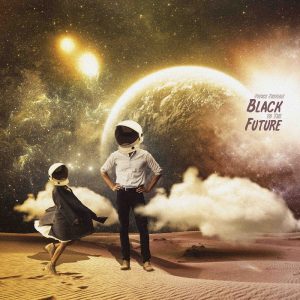 In Black to the Future, the follow-up to D.a.D. (2020), his debut album for families, Pierce Freelon introduces listeners to Afrofuturism. Combining imagination, science, and technology Freelon takes a futuristic look at the world through the lens of the Black experience, crafting a collection of music that is at once timely and out-of-this-world. Over the course of 18 tracks, we are treated to conversations with Freelon’s son and daughter as well as one special conversation with Miss Ella Jenkins. The songs on Black to the Future cover topics ranging from the process of a father and daughter working to get her hair braided, to navigating the first day of school, to the pain that hurtful words can cause. Along the way important lessons such as being grateful for the big and the little things in life, it’s ok to say no, and “Black boys, it’s ok to be vulnerable” are included. And in a tremendous ode to cultural icon Levar Burton listeners are urged to “seek knowledge and understanding.”
In Black to the Future, the follow-up to D.a.D. (2020), his debut album for families, Pierce Freelon introduces listeners to Afrofuturism. Combining imagination, science, and technology Freelon takes a futuristic look at the world through the lens of the Black experience, crafting a collection of music that is at once timely and out-of-this-world. Over the course of 18 tracks, we are treated to conversations with Freelon’s son and daughter as well as one special conversation with Miss Ella Jenkins. The songs on Black to the Future cover topics ranging from the process of a father and daughter working to get her hair braided, to navigating the first day of school, to the pain that hurtful words can cause. Along the way important lessons such as being grateful for the big and the little things in life, it’s ok to say no, and “Black boys, it’s ok to be vulnerable” are included. And in a tremendous ode to cultural icon Levar Burton listeners are urged to “seek knowledge and understanding.”
The Afrofuturism influence is felt from the album’s cover art to tracks like “Solar Skate” and title track “Black to the Future.” From beginning to end, Black to the Future is filled with an incredible blend of jazz, R&B, hip hop and electronic pop often set to engaging cosmic beats. A pair of songs bookend the album and serve as perfect examples of the evolution of the music. The album opens with “No One Exactly Like You,” a long lost recording by Freelon’s mother, jazz legend Nnenna Freelon, and closes with a futuristic take on the same song.
The pandemic is also evident on the album in the form of the songs “Cootie Shot” and “ZOMBI.” In “Cootie Shot” listeners are encouraged to not be afraid of needles in order to get those important shots, while Freelon’s daughter Stella shines on her song, “ZOMBI” as she talks about the scary struggle that the past year was for kids having to not only stay home, but physically stay distanced from others. Both songs serve as powerful reminders of the times we are living in.
Black to the Future is a one-of-a-kind album that will have wide appeal and is the perfect set of music for those tweens that are too old for “little kid” music and not quite ready for more adult albums.

 I’m so excited to announce that Little Miss Ann’s sixth album of original songs for families is being released on May 7 (check out that fantastic album cover art at left from Pirata y Luna Estudio Creativo!). Available for pre-order beginning on April 23, this latest album promises a new and exciting sound. Based on what I’ve heard from the first single, that promise is being kept! Produced by Dean Jones and written and performed by Little Miss Ann, with an assist from Suzi Shelton, “Marshmallow Man” is powered by electric guitars and filled with groovy fun. Listeners will be entertained with the single all on its own (
I’m so excited to announce that Little Miss Ann’s sixth album of original songs for families is being released on May 7 (check out that fantastic album cover art at left from Pirata y Luna Estudio Creativo!). Available for pre-order beginning on April 23, this latest album promises a new and exciting sound. Based on what I’ve heard from the first single, that promise is being kept! Produced by Dean Jones and written and performed by Little Miss Ann, with an assist from Suzi Shelton, “Marshmallow Man” is powered by electric guitars and filled with groovy fun. Listeners will be entertained with the single all on its own (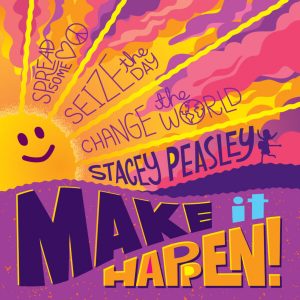 Stacey Peasley’s fifth album for families, Make It Happen!, is a wonderfully refreshing thirty minutes of music. Backed by popping melodies, each of the ten original songs in this collection tells a story packed with details that children can easily relate to. The first three tracks – “Make It Happen,” “Boo Boo,” and “What Girls Do” – employ lyrics that empower listeners with messages that acknowledge that even though being a kid is hard, they are resilient and are here to do amazing things. With spring and summer sports beginning again, listeners will get all revved up for game day with the anthem “Play the Game,” while “Swimming Pool” will be a good track to share with children who might be nervous about taking swimming lessons for the first time. If you’re looking for new songs to use during storytime, “Choo Choo” is a great fast paced tune to use during a dance break, while “At the Parade” is interactive from beginning to end, inviting listeners to be the instruments, marchers and cheering audience at the parade. Make it Happen! is a joy from beginning to end.
Stacey Peasley’s fifth album for families, Make It Happen!, is a wonderfully refreshing thirty minutes of music. Backed by popping melodies, each of the ten original songs in this collection tells a story packed with details that children can easily relate to. The first three tracks – “Make It Happen,” “Boo Boo,” and “What Girls Do” – employ lyrics that empower listeners with messages that acknowledge that even though being a kid is hard, they are resilient and are here to do amazing things. With spring and summer sports beginning again, listeners will get all revved up for game day with the anthem “Play the Game,” while “Swimming Pool” will be a good track to share with children who might be nervous about taking swimming lessons for the first time. If you’re looking for new songs to use during storytime, “Choo Choo” is a great fast paced tune to use during a dance break, while “At the Parade” is interactive from beginning to end, inviting listeners to be the instruments, marchers and cheering audience at the parade. Make it Happen! is a joy from beginning to end.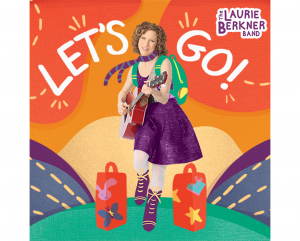 March roared in with the arrival of music from two evergreen children’s performers – Laurie Berkner and The Wiggles. Not one to let something like a pandemic slow her down, on March 5, Laurie released her 14th album, Let’s Go! Filled with her signature style these 16 songs, running a brief 33 minutes total, will not disappoint. Tracks like “When It’s Cold,” “Time to Eat,” and “Jumping Jack” would be welcome additions to storytimes as they encourage children to wiggle, jump, spin, clap, and knock while “Happy New Year” is the perfect way to end this year’s Noon Year’s Eve events. Reminders of the times in which we live are evident in “The Superhero Handwashing Song,” “The Superhero Mask Song,” and the opening track, “Let’s Go!” which celebrates the building excitement as everyone gets ready to go outside. In addition to all of this fun, there are also some quiet moments, times for mindfulness and reflection in “Listen to the Sounds,” and “Beautiful Light.”
March roared in with the arrival of music from two evergreen children’s performers – Laurie Berkner and The Wiggles. Not one to let something like a pandemic slow her down, on March 5, Laurie released her 14th album, Let’s Go! Filled with her signature style these 16 songs, running a brief 33 minutes total, will not disappoint. Tracks like “When It’s Cold,” “Time to Eat,” and “Jumping Jack” would be welcome additions to storytimes as they encourage children to wiggle, jump, spin, clap, and knock while “Happy New Year” is the perfect way to end this year’s Noon Year’s Eve events. Reminders of the times in which we live are evident in “The Superhero Handwashing Song,” “The Superhero Mask Song,” and the opening track, “Let’s Go!” which celebrates the building excitement as everyone gets ready to go outside. In addition to all of this fun, there are also some quiet moments, times for mindfulness and reflection in “Listen to the Sounds,” and “Beautiful Light.” 
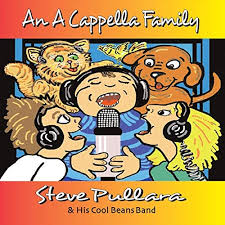 “I’m an a cappella fella with an a cappella family,” declares Steve Pullara on the opening track from his latest album, An A Cappella Family. Over the course of ten light, uplifting songs, Steve and his talented “family,” a group of musicians who recorded the entire album from a distance during the pandemic, entertain listeners with clever lyrics and jaunty melodies. The songs cover a wide range of topics including having gum stuck to the bottom of your shoe, the fun of slurping while eating, and the trials of losing your car in the parking lot. Also included are songs about a family’s adopted dog Bowzer and adopted cat Whiskers, a great tune about the fact that almost everything in life arrives at the store via truck, and a cool song about friends that proudly declares, “Big or small, short or tall, my friends come in all shapes and sizes.” While the majority of the album is very up tempo, things do slow down a bit with songs like “Midnight on the Moon” and “Ti Amo Lullaby.”
“I’m an a cappella fella with an a cappella family,” declares Steve Pullara on the opening track from his latest album, An A Cappella Family. Over the course of ten light, uplifting songs, Steve and his talented “family,” a group of musicians who recorded the entire album from a distance during the pandemic, entertain listeners with clever lyrics and jaunty melodies. The songs cover a wide range of topics including having gum stuck to the bottom of your shoe, the fun of slurping while eating, and the trials of losing your car in the parking lot. Also included are songs about a family’s adopted dog Bowzer and adopted cat Whiskers, a great tune about the fact that almost everything in life arrives at the store via truck, and a cool song about friends that proudly declares, “Big or small, short or tall, my friends come in all shapes and sizes.” While the majority of the album is very up tempo, things do slow down a bit with songs like “Midnight on the Moon” and “Ti Amo Lullaby.”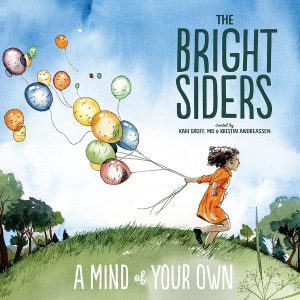 A Mind of Your Own by
A Mind of Your Own by 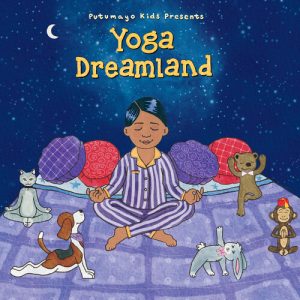 Follow up the music of The Bright Siders with the nine quiet, gentle tracks of Yoga Dreamland from
Follow up the music of The Bright Siders with the nine quiet, gentle tracks of Yoga Dreamland from 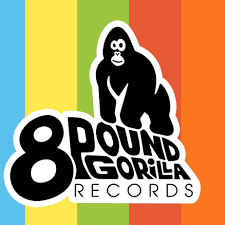 As I’ve mentioned before, I’m a Youth Services librarian in a medium sized suburban library. A couple of weeks ago, the relevancy of CDs came up in a networking group of children’s librarians. The question was – are the children’s music collections in public libraries still being checked out? Roughly 90% of the respondents said that even before the pandemic folks had stopped checking the music out and that they had either already removed their music collections or were in the process of doing so. Even though streaming music and viewing music videos on YouTube are on the rise, I still found myself surprised by this, especially since our music collection still sees a lot of use. Shortly after that, a call went out among youth library staff in a national networking group looking for songs on a certain theme. The majority of the suggestions made were songs by artists who have been used in programs for years and years. Both of these discussions raised the questions for me – How do we get library staff to move beyond the old standbys? And how will our families learn of new, exciting, diverse performers with songs that don’t sound like stereotypical children’s music, if we don’t introduce them through the physical CD or our programs? That’s where 8 Pound Gorilla Records comes in.
As I’ve mentioned before, I’m a Youth Services librarian in a medium sized suburban library. A couple of weeks ago, the relevancy of CDs came up in a networking group of children’s librarians. The question was – are the children’s music collections in public libraries still being checked out? Roughly 90% of the respondents said that even before the pandemic folks had stopped checking the music out and that they had either already removed their music collections or were in the process of doing so. Even though streaming music and viewing music videos on YouTube are on the rise, I still found myself surprised by this, especially since our music collection still sees a lot of use. Shortly after that, a call went out among youth library staff in a national networking group looking for songs on a certain theme. The majority of the suggestions made were songs by artists who have been used in programs for years and years. Both of these discussions raised the questions for me – How do we get library staff to move beyond the old standbys? And how will our families learn of new, exciting, diverse performers with songs that don’t sound like stereotypical children’s music, if we don’t introduce them through the physical CD or our programs? That’s where 8 Pound Gorilla Records comes in.